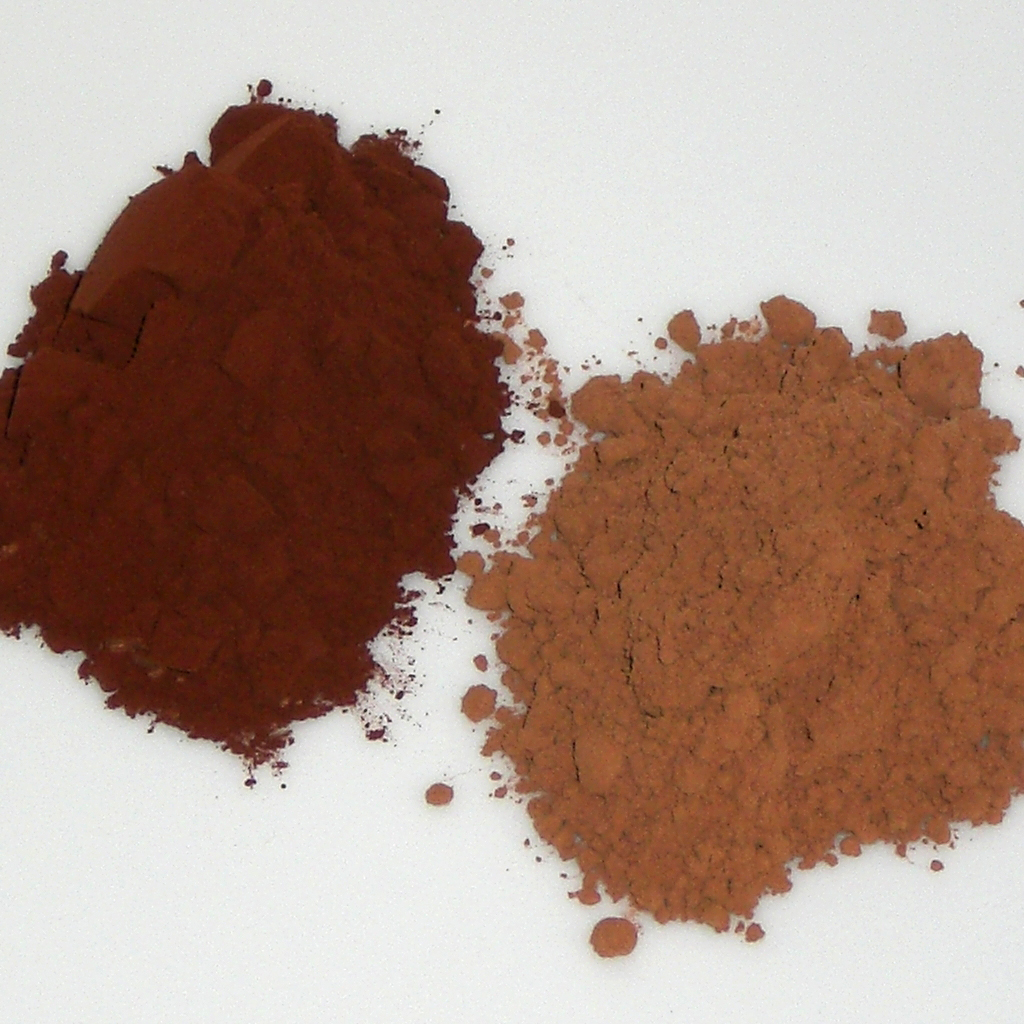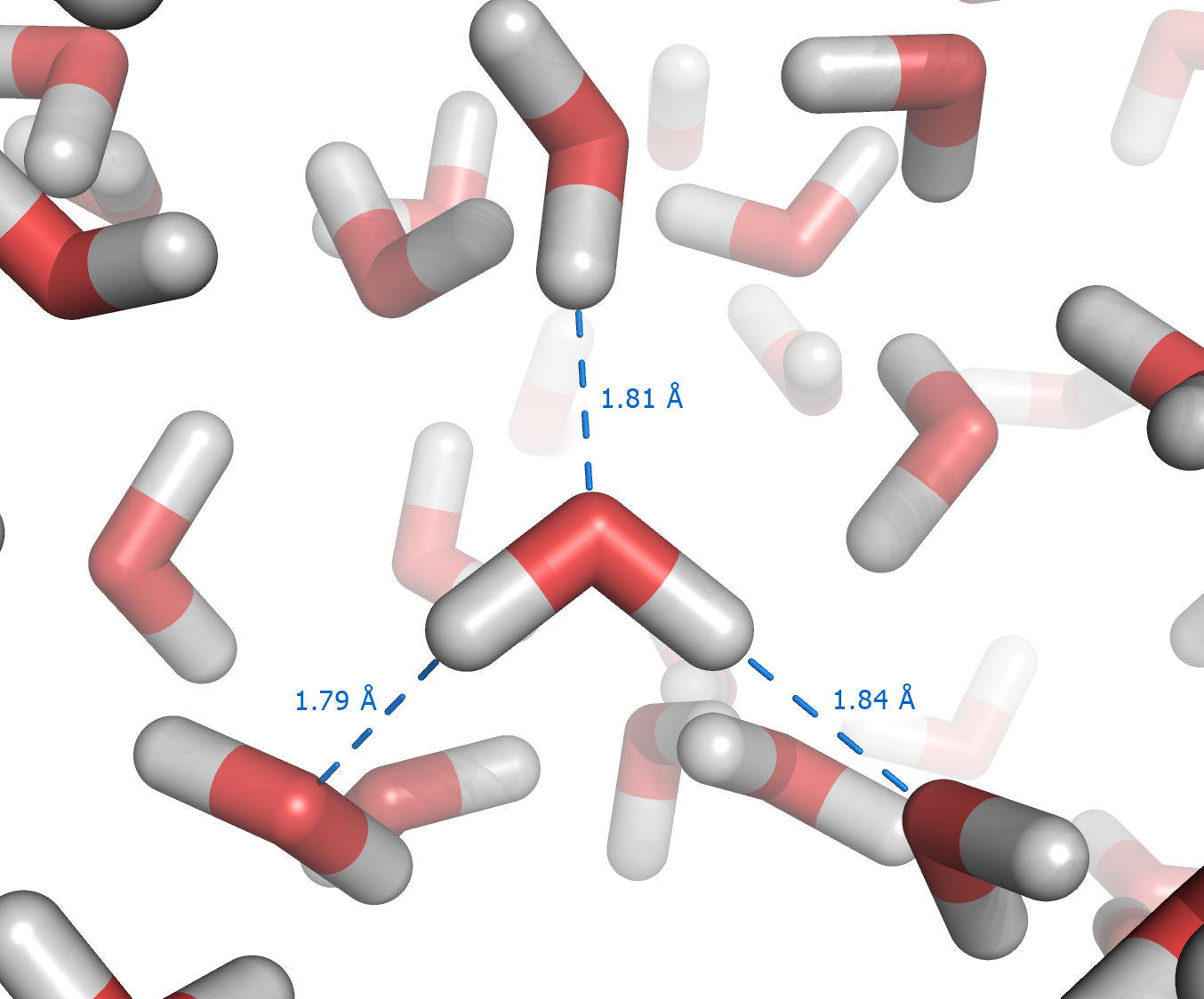Hydrophobic Effect on:
[Wikipedia]
[Google]
[Amazon]
 The hydrophobic effect is the observed tendency of nonpolar substances to aggregate in an
The hydrophobic effect is the observed tendency of nonpolar substances to aggregate in an
 The origin of the hydrophobic effect is not fully understood.
Some argue that the hydrophobic interaction is mostly an entropic effect originating from the disruption of highly dynamic
The origin of the hydrophobic effect is not fully understood.
Some argue that the hydrophobic interaction is mostly an entropic effect originating from the disruption of highly dynamic
 The hydrophobic effect is the observed tendency of nonpolar substances to aggregate in an
The hydrophobic effect is the observed tendency of nonpolar substances to aggregate in an aqueous solution
An aqueous solution is a solution in which the solvent is water. It is mostly shown in chemical equations by appending (aq) to the relevant chemical formula. For example, a solution of table salt, also known as sodium chloride (NaCl), in water ...
and to be excluded by water
Water is an inorganic compound with the chemical formula . It is a transparent, tasteless, odorless, and Color of water, nearly colorless chemical substance. It is the main constituent of Earth's hydrosphere and the fluids of all known liv ...
. The word hydrophobic literally means "water-fearing", and it describes the segregation of water and nonpolar substances, which maximizes the entropy
Entropy is a scientific concept, most commonly associated with states of disorder, randomness, or uncertainty. The term and the concept are used in diverse fields, from classical thermodynamics, where it was first recognized, to the micros ...
of water and minimizes the area of contact between water and nonpolar molecules. In terms of thermodynamics, the hydrophobic effect is the free energy change of water surrounding a solute. A positive free energy change of the surrounding solvent indicates hydrophobicity, whereas a negative free energy change implies hydrophilicity.
The hydrophobic effect is responsible for the separation of a mixture of oil and water into its two components. It is also responsible for effects related to biology, including: cell membrane
The cell membrane (also known as the plasma membrane or cytoplasmic membrane, and historically referred to as the plasmalemma) is a biological membrane that separates and protects the interior of a cell from the outside environment (the extr ...
and vesicle formation, protein folding
Protein folding is the physical process by which a protein, after Protein biosynthesis, synthesis by a ribosome as a linear chain of Amino acid, amino acids, changes from an unstable random coil into a more ordered protein tertiary structure, t ...
, insertion of membrane proteins into the nonpolar lipid environment and protein-small molecule
In molecular biology and pharmacology, a small molecule or micromolecule is a low molecular weight (≤ 1000 daltons) organic compound that may regulate a biological process, with a size on the order of 1 nm. Many drugs are small molecules; ...
associations. Hence the hydrophobic effect is essential to life. Substances for which this effect is observed are known as hydrophobes.
Amphiphiles
Amphiphiles are molecules that have both hydrophobic and hydrophilic domains.Detergent
A detergent is a surfactant or a mixture of surfactants with Cleanliness, cleansing properties when in Concentration, dilute Solution (chemistry), solutions. There are a large variety of detergents. A common family is the alkylbenzene sulfonate ...
s are composed of amphiphiles that allow hydrophobic molecules to be solubilized in water by forming micelles and bilayers (as in soap bubbles
A soap bubble (commonly referred to as simply a bubble) is an extremely thin film of soap or detergent and water enclosing air that forms a hollow sphere with an iridescent surface. Soap bubbles usually last for only a few seconds before burs ...
). They are also important to cell membranes composed of amphiphilic phospholipid
Phospholipids are a class of lipids whose molecule has a hydrophilic "head" containing a phosphate group and two hydrophobic "tails" derived from fatty acids, joined by an alcohol residue (usually a glycerol molecule). Marine phospholipids typ ...
s that prevent the internal aqueous environment of a cell from mixing with external water.
Folding of macromolecules
In the case of protein folding, the hydrophobic effect is important to understanding the structure of proteins that have hydrophobicamino acid
Amino acids are organic compounds that contain both amino and carboxylic acid functional groups. Although over 500 amino acids exist in nature, by far the most important are the 22 α-amino acids incorporated into proteins. Only these 22 a ...
s (such as valine
Valine (symbol Val or V) is an α-amino acid that is used in the biosynthesis of proteins. It contains an α- amino group (which is in the protonated −NH3+ form under biological conditions), an α- carboxylic acid group (which is in the deproton ...
, leucine
Leucine (symbol Leu or L) is an essential amino acid that is used in the biosynthesis of proteins. Leucine is an α-amino acid, meaning it contains an α-amino group (which is in the protonated −NH3+ form under biological conditions), an α-Car ...
, isoleucine
Isoleucine (symbol Ile or I) is an α-amino acid that is used in the biosynthesis of proteins. It contains an α-amino group (which is in the protonated −NH form under biological conditions), an α-carboxylic acid group (which is in the depro ...
, phenylalanine
Phenylalanine (symbol Phe or F) is an essential α-amino acid with the chemical formula, formula . It can be viewed as a benzyl group substituent, substituted for the methyl group of alanine, or a phenyl group in place of a terminal hydrogen of ...
, tryptophan
Tryptophan (symbol Trp or W)
is an α-amino acid that is used in the biosynthesis of proteins. Tryptophan contains an α-amino group, an α-carboxylic acid group, and a side chain indole, making it a polar molecule with a non-polar aromat ...
and methionine
Methionine (symbol Met or M) () is an essential amino acid in humans.
As the precursor of other non-essential amino acids such as cysteine and taurine, versatile compounds such as SAM-e, and the important antioxidant glutathione, methionine play ...
) clustered together within the protein. Structures of globular proteins have a hydrophobic core in which hydrophobic side chains are buried from water, which stabilizes the folded state. Charged and polar side chains are situated on the solvent-exposed surface where they interact with surrounding water molecules. Minimizing the number of hydrophobic side chains exposed to water is the principal driving force behind the folding process, although formation of hydrogen bonds within the protein also stabilizes protein structure.
The energetics of DNA
Deoxyribonucleic acid (; DNA) is a polymer composed of two polynucleotide chains that coil around each other to form a double helix. The polymer carries genetic instructions for the development, functioning, growth and reproduction of al ...
tertiary-structure assembly were determined to be driven by the hydrophobic effect, in addition to Watson–Crick base pairing, which is responsible for sequence selectivity, and stacking interactions between the aromatic bases.
Protein purification
Inbiochemistry
Biochemistry, or biological chemistry, is the study of chemical processes within and relating to living organisms. A sub-discipline of both chemistry and biology, biochemistry may be divided into three fields: structural biology, enzymology, a ...
, the hydrophobic effect can be used to separate mixtures of proteins based on their hydrophobicity. Column chromatography with a hydrophobic stationary phase such as phenyl- sepharose will cause more hydrophobic proteins to travel more slowly, while less hydrophobic ones elute from the column sooner. To achieve better separation, a salt may be added (higher concentrations of salt increase the hydrophobic effect) and its concentration decreased as the separation progresses.
Cause
 The origin of the hydrophobic effect is not fully understood.
Some argue that the hydrophobic interaction is mostly an entropic effect originating from the disruption of highly dynamic
The origin of the hydrophobic effect is not fully understood.
Some argue that the hydrophobic interaction is mostly an entropic effect originating from the disruption of highly dynamic hydrogen bond
In chemistry, a hydrogen bond (H-bond) is a specific type of molecular interaction that exhibits partial covalent character and cannot be described as a purely electrostatic force. It occurs when a hydrogen (H) atom, Covalent bond, covalently b ...
s between molecules of liquid water by the nonpolar solute. A hydrocarbon chain or a similar nonpolar region of a large molecule is incapable of forming hydrogen bonds with water. Introduction of such a non-hydrogen bonding surface into water causes disruption of the hydrogen bonding network between water molecules. The hydrogen bonds are reoriented tangentially to such surface to minimize disruption of the hydrogen bonded 3D network of water molecules, and this leads to a structured water "cage" around the nonpolar surface. The water molecules that form the "cage" (or clathrate
A clathrate is a chemical substance consisting of a lattice (group), lattice that traps or contains molecules. The word ''clathrate'' is derived from the Latin language, Latin (), meaning 'with bars, Crystal structure, latticed'. Most clathrate ...
) have restricted mobility. In the solvation shell of small nonpolar particles, the restriction amounts to some 10%. For example, in the case of dissolved xenon at room temperature a mobility restriction of 30% has been found. In the case of larger nonpolar molecules, the reorientational and translational motion of the water molecules in the solvation shell may be restricted by a factor of two to four; thus, at 25 °C the reorientational correlation time of water increases from 2 to 4-8 picoseconds. Generally, this leads to significant losses in translational and rotational entropy
Entropy is a scientific concept, most commonly associated with states of disorder, randomness, or uncertainty. The term and the concept are used in diverse fields, from classical thermodynamics, where it was first recognized, to the micros ...
of water molecules and makes the process unfavorable in terms of the free energy in the system. By aggregating together, nonpolar molecules reduce the surface area exposed to water and minimize their disruptive effect.
The hydrophobic effect can be quantified by measuring the partition coefficient
In the physical sciences, a partition coefficient (''P'') or distribution coefficient (''D'') is the ratio of concentrations of a chemical compound, compound in a mixture of two immiscible solvents at partition equilibrium, equilibrium. This rati ...
s of non-polar molecules between water and non-polar solvents. The partition coefficients can be transformed to free energy of transfer which includes enthalpic and entropic components, ''ΔG = ΔH - TΔS''. These components are experimentally determined by calorimetry
In chemistry and thermodynamics, calorimetry () is the science or act of measuring changes in '' state variables'' of a body for the purpose of deriving the heat transfer associated with changes of its state due, for example, to chemical reac ...
. The hydrophobic effect was found to be entropy-driven at room temperature because of the reduced mobility of water molecules in the solvation shell of the non-polar solute; however, the enthalpic component of transfer energy was found to be favorable, meaning it strengthened water-water hydrogen bonds in the solvation shell due to the reduced mobility of water molecules. At the higher temperature, when water molecules become more mobile, this energy gain decreases along with the entropic component. The hydrophobic effect depends on the temperature, which leads to "cold denaturation" of proteins.
The hydrophobic effect can be calculated by comparing the free energy of solvation with bulk water. In this way, the hydrophobic effect not only can be localized but also decomposed into enthalpic and entropic contributions.
See also
* Entropic force * Hydrophobe *Hydrophile
A hydrophile is a molecule or other molecular entity that is intermolecular force, attracted to water molecules and tends to be dissolution (chemistry), dissolved by water.Liddell, H.G. & Scott, R. (1940). ''A Greek-English Lexicon'' Oxford: Clar ...
* Hydrophobicity scales
* Interfacial tension
* Superhydrophobe
* Superhydrophobic coating
References
{{DEFAULTSORT:Hydrophobic Effect Chemical bonding Supramolecular chemistry Intermolecular forces